(will be updated)
Category Archives: Film Role 3 (pages / portfolio)
Filters
Character profile
Clip – sound editor – escape action
Only one character used – protagonist chased from unseen force presumably another person or external threat
No clear character used to give chase, to add suspense and tension by not giving away too much. Makes plot more mysterious and intrigues audience
Character bio
Name – unknown, no reference to name or anything identifying him. Implies that he is on the run, so little known personal information is assumed to retain anonymous
Age – late teens, early twenties. Again; little is known, but his age is implied from his build and stature
Traits – mysterious, fearful, ambiguous
Motive – to escape whatever, or whoever is chasing him
Casting
I have decided to cast a friend, Aleksander in this role. For one, he understands the role I have explicably described to him. After discussing the role, I think he would fit the mysterious character of which dominates the short clip because understands the potential and drive that needs to be shown
Visually, there are no specifics in regards to how I want the character to look. Tall, and mysterious should be important in representing the ambiguity within the film
Since we do not know much about the character it is vital that the physical look represents the traits explained above. As little is known about the character, it is down to him to express the fear, paranoia and mystery which are the important traits displayed by the main and only character I conceived for this piece

In regards to finding a backup, should he not suit the role; it would not be particularly difficult to find someone who could portray such a vague character
Despite the complexities hidden behind the characters’ anonymity, the versatility of the characters’ look, allows for me to adapt my perception of how the character should visually appear
As a result of this, actors should not be difficult to find because they are no physical traits which make the character stand out that could make casting difficult
It could be possible to adapt the character to a female as there is little information given about his backstory which builds an interesting and mysterious narrative
French New Wave – “Breathless”
Breathless – French New Wave
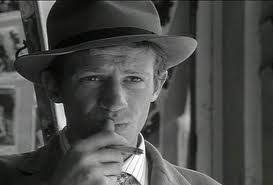 Breathless is a film directed by Jean Luc – Godard in 1960. It is a film which was part of the French New Wave film movement. The film was filmed in Paris on sight. This was because breathless had a low budget, around £15,000, which is an extremely low budget for a film. Continuing with this theme of a low budget, the whole film was recorded in black and white in order to save money. However, this also contributed to the films feeling of Noir.
Breathless is a film directed by Jean Luc – Godard in 1960. It is a film which was part of the French New Wave film movement. The film was filmed in Paris on sight. This was because breathless had a low budget, around £15,000, which is an extremely low budget for a film. Continuing with this theme of a low budget, the whole film was recorded in black and white in order to save money. However, this also contributed to the films feeling of Noir.
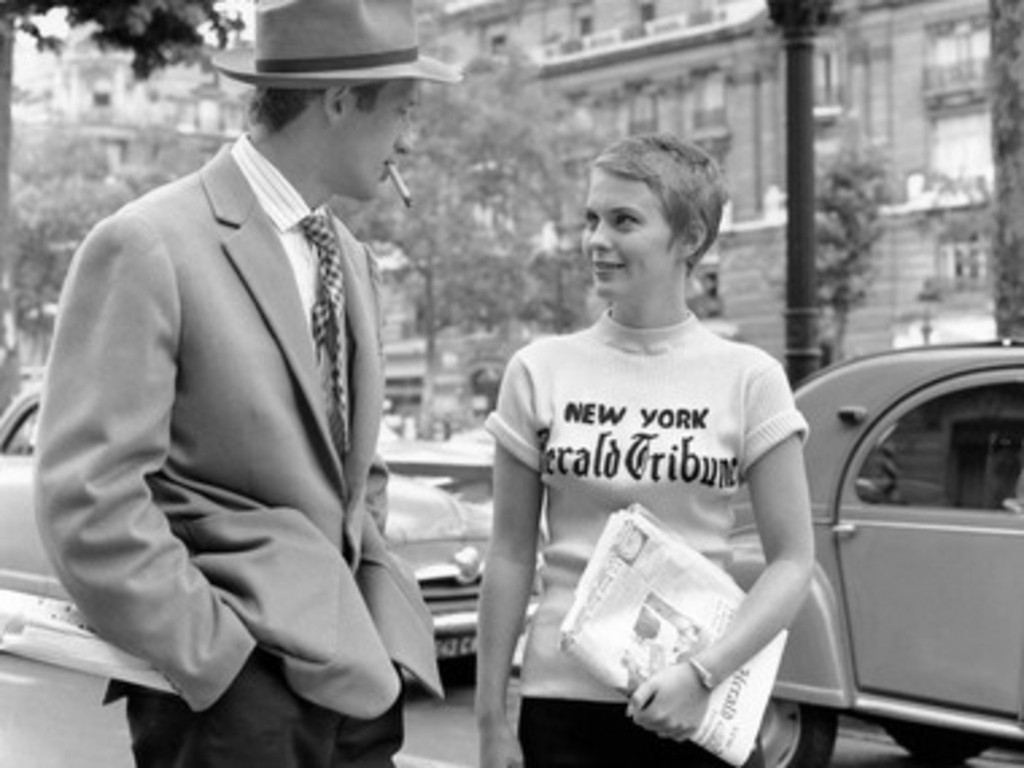 The idea of film Noir is a big idea in this film. From the black and white film reel, to the stereotype of a chain-smoking man in a suit and fedora. Both contribute to the Film Noir style. This film set the standards for Film Noir in the future, any other Noir Film you see will almost seem like or make references to this film. For instance, films such as Blade runner and a Touch of Evil depict dark worlds, in which we follow a dark character (though in Blade Runner is a police officer) through chase sequences, and the main character being either a detective or on the wrong side of the law. Either way, the police Is usual involved in some way. However, Blade runner is a little different because the film is in color. However, in the intro for instance, the shots of the city are very dark. This is a theme throughout the film, although they have access to color, the film tends to steer away from using color in its shits when it can. Keeping with the idea of Noir being black and white. As we as all that, in Noir films the characters tend to smoke a lot. I think this had to do with how mysterious the main character usually is, using smoke to hide their appearance.
The idea of film Noir is a big idea in this film. From the black and white film reel, to the stereotype of a chain-smoking man in a suit and fedora. Both contribute to the Film Noir style. This film set the standards for Film Noir in the future, any other Noir Film you see will almost seem like or make references to this film. For instance, films such as Blade runner and a Touch of Evil depict dark worlds, in which we follow a dark character (though in Blade Runner is a police officer) through chase sequences, and the main character being either a detective or on the wrong side of the law. Either way, the police Is usual involved in some way. However, Blade runner is a little different because the film is in color. However, in the intro for instance, the shots of the city are very dark. This is a theme throughout the film, although they have access to color, the film tends to steer away from using color in its shits when it can. Keeping with the idea of Noir being black and white. As we as all that, in Noir films the characters tend to smoke a lot. I think this had to do with how mysterious the main character usually is, using smoke to hide their appearance.

Cinematography and Editing in Breathless
Breathless (1960, dir. Jean-Luc Godard) is a very influential film, and is an example of French New Wave cinema. At this point in time, there were cinema conventions established by Hollywood. Movies made during the French New Wave era typically didn’t follow these conventions. For example, in Breathless, there are lots of scenes where the characters have meaningless conversations.
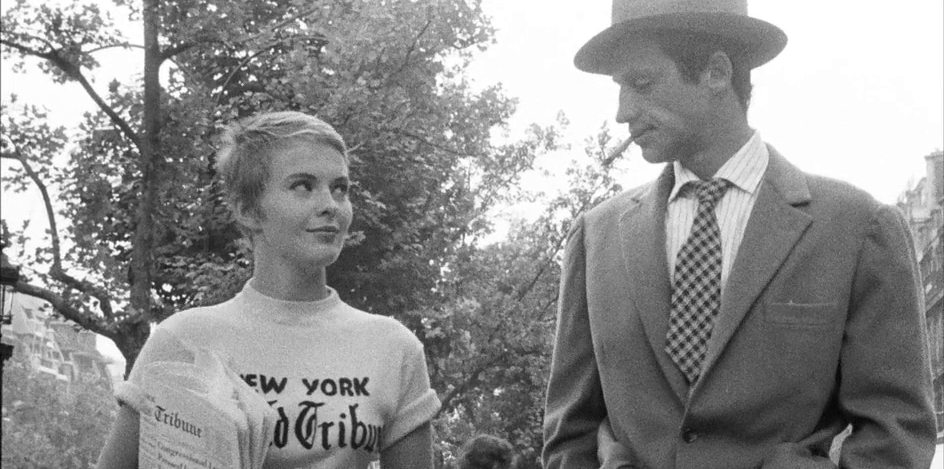
These scenes were sometimes improvised by the actors, and give the film a more natural feel to it. This is different from the mainstream films that were being produced at the time, where everything was very scripted. Audiences were getting bored with these films, which is why films such as Breathless and the French New Wave movement were so successful. These improvised scenes often were made up of long shots and deep focus shots. This allows the audience to interpret the scene how they want, and adds to the more naturalistic feel that it has.
Godard also uses a number of jump cuts in some scenes in Breathless. These shots look unnatural, as they are only slightly different from the previous one. The jump cuts suggest that time has passed since the previous shot, but as Patricia is in the same position it seems unusual.
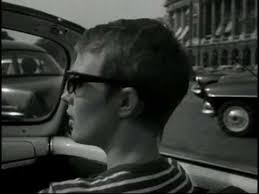
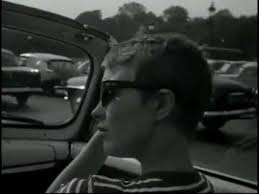
Godard used methods like these in Breathless to remind the audience that they were actually watching a film, and that the scenes weren’t real. This distances the viewer from the story and the characters within it. These shots also seem unusual because while the image is changing and apparently showing different points in time, Michel talks continuously over the top. One other reason for the seemingly random jump cuts was because Godard was told to make the film shorter. This led him to cut parts of scenes out, making them feel like there were parts missing. The jump cuts weren’t originally intended during filming, but Godard’s style later was called innovative.
One feature of French New Wave Cinema is an emphasis on having realistic mise-en-scene. Breathless was filmed in real locations, and had no sets constructed for it. This led to the film having a very naturalistic look and feel to it. Godard’s decision to film in this way led to the film presenting a more realistic view of the world, rather than it being over-stylised, which previous films were.

The final scene of the movie was shot in a real Paris street, rather than constructing a set. This saved the crew precious time and money, as they had a relatively low budget. Again, this is what makes Breathless different from other mainstream films, as elaborate sets weren’t needed. In addition, the ending of the film is different from what audiences would have expected to see. During the ‘golden age of Hollywood’, audiences had become used to films where the protagonist was a hero and makes the right decisions. However, Michel dies at the end of Breathless, changing the expectation for the protagonist to survive, and for them to always be the hero.
Breathless was Godard’s first film. Before he became a director, he wrote for a magazine called Cahiers du Cinéma, which analysed and criticised films. Through this magazine, which he co-wrote with François Truffaut, he developed the auteur theory which suggests that the director of a film is the real writer, rather than the person who wrote the screenplay. This is because elements such as camera placement and lighting are chosen by the director, and convey the main message of the film. This could be why Breathless has such a personal and everyday feel to it, because Godard focused on using mainly the mise-en-scene to tell the story.
Godard’s style can be seen in modern-day movies, as his influence has reached a lot of mainstream cinema. For example, Pulp Fiction (dir. Quentin Tarintino, 1994) uses lots of seemingly random cuts, which is a style of Godard’s. This editing adds tension and action to the scenes. Also, some scenes in Pulp Fiction are random and not important to the whole plot, for example when two characters are talking. This adds a sense of verisimilitude to the film, and is something that was developed in French New Wave cinema.
Montage in Strike
Strike (1925, dir. Serge Eisenstein) was a silent film, and Eisenstein’s first feature length film. It was made during the rise of the Soviet Union, and features different Soviet montage techniques, which were used by Eisenstein to tell the worker’s story. Eisenstein’s innovative editing and montage techniques are inspired from when he was at VGIK, a film school in Moscow. At this time, there was very little raw film stock in Russia, so new films couldn’t be made. Instead, people focused on studying films. They would cut up existing film reels and find out what different effects were created by editing scenes together in certain ways. This led Eisenstein to come up with his five methods of montage: rhythmic, metric, tonal, over-tonal and the intellectual method.
One use of method of montage used was metric editing, where the lengths of shots create the tempo of the scene. This is used near the beginning of the film, where the strike is being organised.


Here, the shot quickly cuts between the faces of the different workers in the factory. Each shot lasts around a second, which isn’t a long time for the audience to process what they’re being shown. The quickly cut shots increase the tempo of the scene, which adds a sense of panic and mayhem to the action. It helps the audience to understand what is going on, as it makes them understand the danger and the urgency that the workers are feeling.
Strike also uses the intellectual method of editing in a number of scenes. For example, when the agents are introduced, the scene cuts from pictures of animals to pictures of their faces, showing their code names. This clearly shows the audience which character is which, and emphasises how their personalities reflect the animals that they are named after.


Here, the shot changes from an image of an owl to the character of The Owl. His actions, for example rubbing his eyes and blinking a lot, are similar to what people would expect to see an owl doing. The shots fade together, making to comparison between the two obvious for the audience.
Another example of intellectual editing is near the end of the film, where the attack on the workers is shown alongside the slaughtering of a cow.


These two unrelated images create a sense that the workers are being massacred, and that they are innocent compared to the cruel and powerful soldiers. It helps the audience sympathise with the people, as the horrific image of the cow isn’t what audiences would have expected to see during the film. It also shows the relentless brutality of the soldiers, and how the workers are treated as though they are just cattle.
Eisenstein’s montage techniques has influenced many aspects of modern day cinema. For example, the series of Rocky films each feature a ‘training montage’, which are clearly inspired by Soviet montage techniques. Music videos are also based on Eisenstein’s idea of rhythmic montage, as shots tend to cut in time to the music playing.
The Cabinet of Dr. Caligari – Micro Elements
The Cabinet of Dr. Caligari is different to many other films at the time as it was not produced by a large company or studio, and therefore had limited or no funds for sets, costume, lighting, etc. One immediately noticeable element of mise-en-scene is the costumes and make-up. The characters are portrayed in very over the top make up, but fairly normal clothing. For instance, Dr. Caligari wears a long coat and top hat,along with a walking cane which makes him seem higher up in society. Many of his actions are overly dramatic and extreme compared to the films of today, although this was fairly common for films of the time. The use of paint and make up for creating was also extremely innovative.

As the movie had such a small budget, sets were painted to create the effect of shadows, and the same was done with make up, and is especially prominent in the character of Cesare. As the film progresses, there are more cases of slanted sets. Slanted sets would include windows,doors, walls and other props at a slightly skewed to subtly show mental deterioration and instability. Cameras at the time of filming were heavy and cumbersome which meant that moving them around to change the shot and focus on specific people or things happening on screen was much more difficult than it is today. To combat this, an iris shot was used to show so something important without moving the camera. by closing down the iris in the lens, it would block out the majority of the shot, leaving only something of importance in the shot.

Make up was not only used to show shadows, and darkness, it was also used to tell the audience about the characters, as well as reflecting the emotion for the scene onto the audience. For instance, Cesare’s make up shows his inner turmoil and conflict in emotions and feelings. As well as the black makeup used, his costume is primarily black, which is a further look into his unstable and dark mind. The combination of costume and make up helps the audience draw connections to him being the villain, and helps establish his character as a whole.

The Cabinet of Dr. Calagarie – Mise- En-Scene
The Cabinet Of Dr.Calagarie and the use of German Expressionism
The Cabinet of Doctor Caligari (1920) was a film directed by Robert Wiene. This was one of the most influential films at the time it was made, for many reasons.
 First, throughout the film the Mise-En-Scene of the film was unique compared to anything that had come before it. Objects in the scenery, such as buildings, chairs and doorways are made to look extremely distorted, compared to reality. This was mainly done to reflect what Germans people’s minds were thinking at the time. They had just come out of World War one with a massive loss. Everyone in the country felt like the world was distorted, with poverty and a lack of jobs. It’s also done as part of the film, as it’s revealed at the end of the story that the protagonist is actual insane. He makes up everything in the story, we’re seeing his distorted view on reality. This is all done in order to put the audience off and make them feel uneasy intently.
First, throughout the film the Mise-En-Scene of the film was unique compared to anything that had come before it. Objects in the scenery, such as buildings, chairs and doorways are made to look extremely distorted, compared to reality. This was mainly done to reflect what Germans people’s minds were thinking at the time. They had just come out of World War one with a massive loss. Everyone in the country felt like the world was distorted, with poverty and a lack of jobs. It’s also done as part of the film, as it’s revealed at the end of the story that the protagonist is actual insane. He makes up everything in the story, we’re seeing his distorted view on reality. This is all done in order to put the audience off and make them feel uneasy intently.
 Another good example of things not looking how they should, is the character Cesare. His facial features look weird compared to everyone else in the film. He’s very pale with round black eyes. This was used to influence other characters in the future, such as Edward Scissor Cesare also seems to have a thousand-yard stare, sometimes staring straight into the camera. This use of breaking the forth wall is another use of Mise-En-Scene that makes the audience uneasy. When Cesare is reveled to the audience, it is shown through a close up. Allowing us to see all of his facial details, the dramatic make up and odd-looking face give the audience a feeling of being uneasy, and unsettle them, it lets the audience guess that Cesare is an odd character, there isn’t something quite right about him.
Another good example of things not looking how they should, is the character Cesare. His facial features look weird compared to everyone else in the film. He’s very pale with round black eyes. This was used to influence other characters in the future, such as Edward Scissor Cesare also seems to have a thousand-yard stare, sometimes staring straight into the camera. This use of breaking the forth wall is another use of Mise-En-Scene that makes the audience uneasy. When Cesare is reveled to the audience, it is shown through a close up. Allowing us to see all of his facial details, the dramatic make up and odd-looking face give the audience a feeling of being uneasy, and unsettle them, it lets the audience guess that Cesare is an odd character, there isn’t something quite right about him.
 The cinematographer for this film, Willy Hameister, famously uses an iris in this film for certain shots. He uses an iris in order to force the audience to focus in on a certain character. For instance, there’s one time the camera focus in on Dr.Calagarie. This is to let the audience know that he is the center of the shot, the main point of focus, by only allowing us to see Dr.Calagarie. As well as that, there is another scene where an Iris is used when focusing on Cesare. This shot is suddenly cut in out of nowhere, which is meant to shock the audience. This ’close up’, along with the iris giving the audience the feeling of being pulled closer to Cesare. This use of cinematography with editing, was revolutionary for the time, and shocked audiences.
The cinematographer for this film, Willy Hameister, famously uses an iris in this film for certain shots. He uses an iris in order to force the audience to focus in on a certain character. For instance, there’s one time the camera focus in on Dr.Calagarie. This is to let the audience know that he is the center of the shot, the main point of focus, by only allowing us to see Dr.Calagarie. As well as that, there is another scene where an Iris is used when focusing on Cesare. This shot is suddenly cut in out of nowhere, which is meant to shock the audience. This ’close up’, along with the iris giving the audience the feeling of being pulled closer to Cesare. This use of cinematography with editing, was revolutionary for the time, and shocked audiences.
As well as that, there was a Technique used called an ‘Iris Wipe’ which was commonly used in silent films. The technique is basically, an iris closes on the lens of the camera as far as it can go, and then a blank piece of card is placed in front of the camera to give the impression that it closed all the way.
Citizen Kane Essay – Is It The Best Film
Citizen Kane Essay – Best Scene
Why I think that Citizen Kane is the greatest film of all time – task 3
Firstly , I think Citizen Kane (1941 , directed by orson Welles) is one of the greatest films of all time because the story is about an ordinary man , Charles Foster Kane , who has lived an extraordinary life and it is a story of his life and and it is quit candid and realistic and it is the realism of this film that drew me to it because , despite the fact that Kane was wealthier than I could ever imagine , ! could actually feel empathy for his man and his wealth and behaviour did not isolate me from him and that allows me to begin to understand him because Kane’s desire for love and admiration is a very human desire that we all have and Kane’s desires touch so many people because we all have them and it creates a universal experience between the audience and the characters.
Secondly , the film was a scathing indictment of the newspaper magnates who controlled the American media in 1941 and, although the film was scathing , the film is subtle in it’s critiques and it is not a heavy – handed morality tale , it just points out the faults in America’s media at the time by examining the life of Charles Foster Kane and the film depicted how powerful the newspaper magnates really were , and from the point of view of a modern audience , the power that they held was shocking , especially when you remember the fact that Citizen Kane was released less than a century ago and the audience can look at the current media landscape and realise that , although a lot of things have changed for the better , there is still a long way to go in terms of a few people having control over the media but things are steadily improving.
Thirdly , the film effectively shows how wealth can isolate people and this aspect of the story makes the film seem more like a cautionary tale against the allure of wealth , although , money itself is not the problem in this film , the problem is with how people with money acts and how easy it is for money to turn someone into a terrible person , in the film we see Kane make this transition from a respectable newspaper owner , to someone who is concerned with power and little else and parallels can be drawn to real – life figures and this is true in both 1941 and 2018 and this helps to make the film , a timeless classic.
To conclude , I think that Citizen Kane is one of the best films of all time because it helps us to empathise with a person who we wouldn’t usually invest our time and energy into getting to know and as we learn about his life , we begin to see him less as a repulsive human being and more as a flawed person who only wants love and he unfortunately never gets the love that he was seeking.
